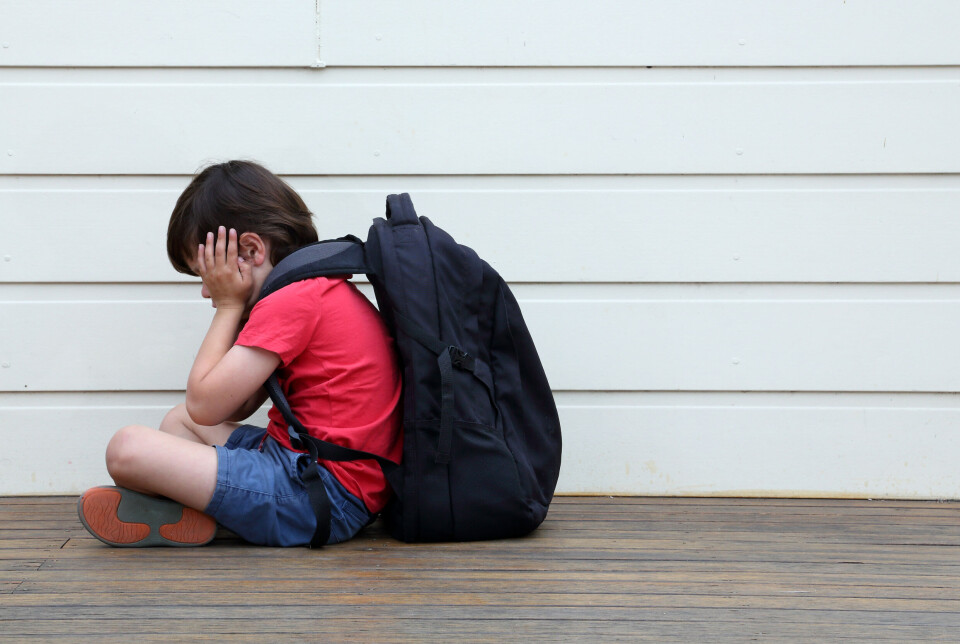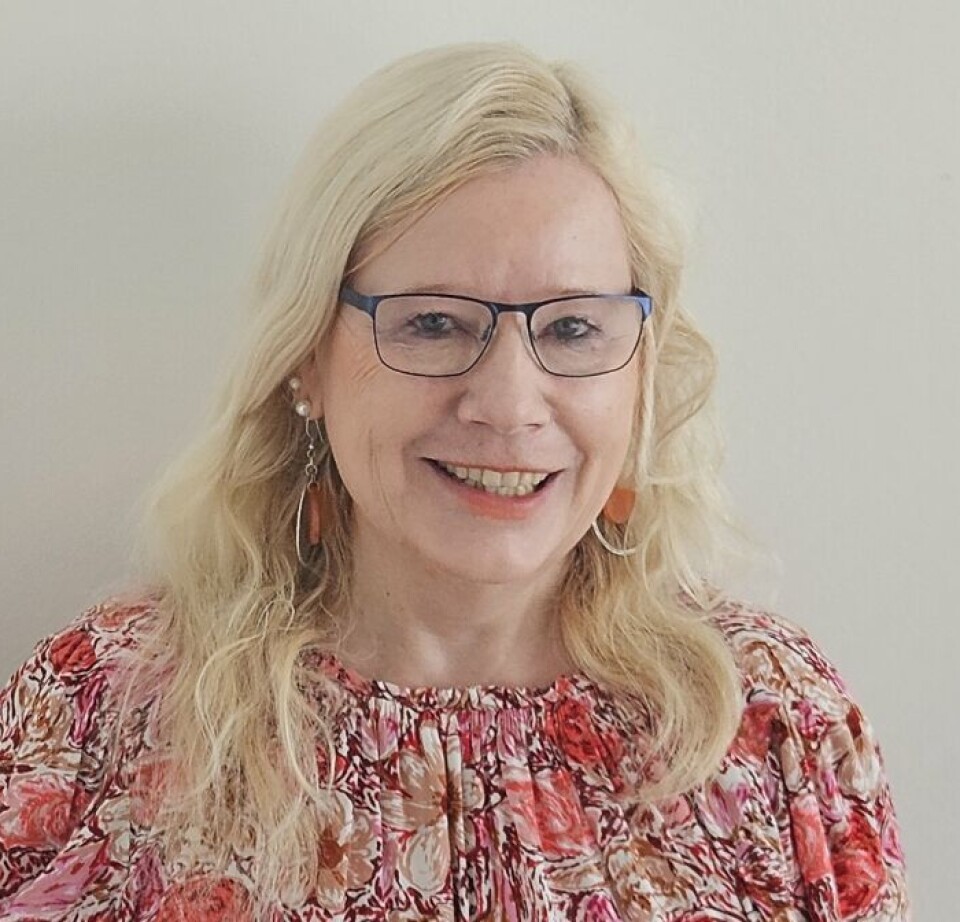THIS CONTENT IS BROUGHT TO YOU BY the University of South-Eastern Norway - read more

School refusal: 8 out of 10 kids perceive school to be an unsafe place
Researchers have looked into what characterises students who struggle with school refusal.
In Norway, school refusal is often referred to as 'involuntary absence from school.'
“The children in question want to be at school – and their parents or guardians also want them to go. However, they feel so anxious that they simply cannot do it," says Marie-Lisbet Amundsen, a professor at the University of South-Eastern Norway's Department of Pedagogy.
In other words, according to the researcher, both parents and children are in despair, and the children's self-esteem is low.
"They feel defeated because they're unable to live up to the school's demands and expectations,” she says.

Amundsen has special expertise in children with complex learning difficulties and social and emotional problems.
In Norway, the term ‘worrying’ or ‘problematic school absence’ is often used as a collective term to describe all pupils who are away from school, regardless of the cause of their absence.
“It's unfortunate that everyone is lumped together in this way, since the causal relationship varies greatly. For example, there's a big difference in what measures should be put in place if it's a case of long-term illness, truancy for various reasons, or if children are absent from school because they feel that school is an overly unsafe environment for growing up,” she says.
Painful findings
Amundsen also leads the University of South-Eastern Norway's research group on professional knowledge of violence, abuse and social and emotional difficulties. The researchers aim to gain greater insight into what characterises pupils who struggle with involuntary school absence/school refusal.
Together with research colleagues Geir Møller and Jens Grøgaard, she has conducted several quantitative studies. Here are some findings regarding children with involuntary school absence:
- 80 per cent perceive school to be an unsafe place.
- 80 per cent have low confidence in their ability to cope.
- 75 per cent struggle with performance anxiety.
- More than half are exposed to bullying.
- 50 per cent do not have good relationships with any teachers at school.
- 60 per cent struggle academically.
- 40 per cent have no friends at school.
- 40 per cent are under the age of 10.
Thrive in kindergarten – struggle at school
Their studies further show that 29 per cent of children develop school refusal already in the first grade.
For boys, half of all who develop school refusal are under 10 years of age. For girls, the challenges often appear somewhat later, usually when they start secondary school.
“In Norway, 93 per cent of children attend kindergarten before they start school. Considering this, it's worth noting that the same children who develop school refusal thrived and had friends in kindergarten. In other words, it's at school that the problems seem to arise,” Amundsen explains.
Vulnerable groups
Professor Amundsen also has 20 years of practical experience as head of a rehabilitation department and as an educational psychologist adviser.
Not surprisingly, she found differences between pupils with neuro-diagnoses and pupils without diagnoses who also struggle with school refusal.
“Compared to pupils without a diagnosis, autistic pupils struggled socially and had a higher risk of being without friends at school. Students with ADHD were more exposed to bullying, struggled socially, and fewer of them had good relations to the teachers. In this group, almost four out of ten develop school refusal already in the first grade,” she says.
Does little good to look for faults in the children
So what would she suggest as a possible solution?
“I want measures that do not reinforce the children's impression that it's they who are wrong. It does little good to focus on what is wrong with the children or the parents, when we know that problems with the school may be the cause of the unwanted absenteeism,” says Amundsen.
She particularly highlights that many of the children who struggle with unwanted absence report having no good adult contacts at school. Many of them have no friends, many have difficulties with schoolwork, and many are bullied.
When the bullying is discovered, most also experience that nothing is done to stop it.
Belief in practical-oriented teaching
“To solve these problems, we must look at how we can change the school, not the children or their parents. Good relationships with the teachers, and that the school day is arranged for academic achievement, have a great significance for whether the children will feel welcome at school again,” says Amundsen.
She adds that in this context, it is worth noting that three out of four parents believe their children would benefit from teaching that is more practically oriented.
References:
Amundsen et al. School refusal and school related differences among students with and without diagnosis, Nordisk Tidsskrift for Pedagogikk og Kritikk, vol. 8, 2022. DOI: 10.23865/ntpk.v8.3514
Amundsen, M.L. & Grøgaard, J.B. Elever med skolevegring: Hvilke faktorer kan ha betydning for at de kommer tilbake til skolen? (Students experiencing school refusal: What factors may influence their return to school?), Nordisk Tidsskrift for Pedagogikk & Kritikk, vol. 9, 2023.
Amundsen, M.L. & Grøgaard, J.B. Skolevegring og bekymringsmeldinger til barnevernet (School refusal and reports of concern to child welfare), Psykologi i kommunen nr. 2, 2023.
Amundsen, M.L. & Møller, G.H. Faglig mestring og prestasjonsangst hos elever som strever med skolevegring (School performance and performance anxiety among students with involuntary absence), Tidsskrift for Velferdsforskning, vol. 25, 2022. DOI: 10.18261/tfv.25.4
Amundsen, M.L. & Møller, G.H. Kjønnsforskjeller i undervisningstilbud hos elever som strever med skolevegring (Gender differences in educational services for students in need of special education), Psykologi i kommunen nr. 5, 2021.

This content is paid for and presented by the University of South-Eastern Norway
This content is created by the University of South-Eastern Norway's communication staff, who use this platform to communicate science and share results from research with the public. The University of South-Eastern Norway is one of more than 80 owners of ScienceNorway.no. Read more here.
More content from the University of South-Eastern Norway:
-
Urban development involves much more than buildings, roads, and green spaces
-
We become less polite when we are shopping
-
Warmer climate enables ticks to survive in the high mountains
-
Humans are 99 per cent the same, yet so different
-
Norwegian researchers reject that Northern Norway is part of the Arctic
-
Community response is vital for social recovery from mental health and substance abuse issues




































